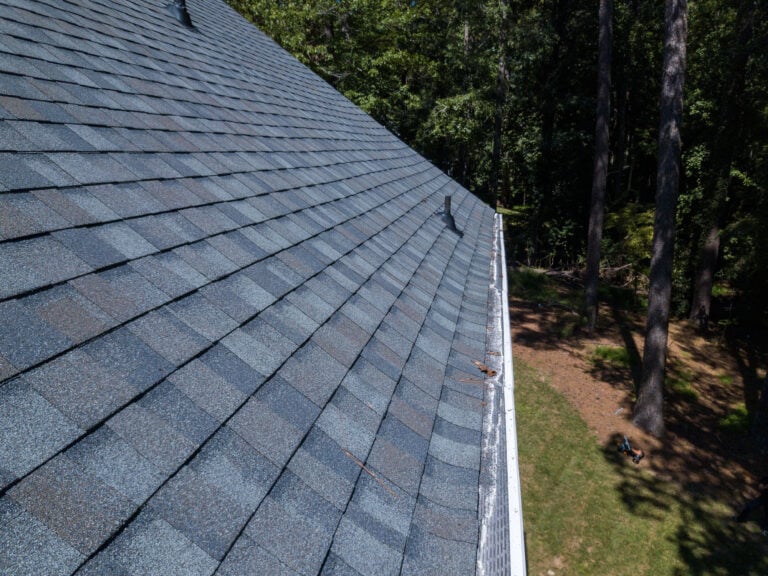Owning a home comes with its fair share of responsibilities and challenges, one of the most significant being maintaining your roof. A well-maintained roof is crucial for protecting your home from weather elements, and any damage to it can lead to a cascade of issues.
Whether it’s due to a severe storm or the natural aging process, knowing how and when to file a roof insurance claim can save you a significant amount of stress and money. This guide will walk you through the entire process, ensuring you’re well-prepared to handle any roofing issues that come your way. You’ll learn:
- How to spot roof damage
- What your insurance covers
- Tips and tricks for a successful claims process
Understanding Roof Insurance Coverage
Before we get into the nitty-gritty of filing a claim, it’s essential to understand what your homeowner’s insurance policy covers. Generally, roof damage caused by unpreventable events such as storms, hail, and falling trees is covered. However, damage resulting from neglect, wear and tear, or poor maintenance is typically not covered.
Key Points to Check in Your Policy
- Coverage Type: Ensure you know whether your policy offers actual cash value (ACV) or replacement cost value (RCV). ACV policies factor in depreciation, while RCV policies cover the cost of a new roof.
- Deductibles: Be aware of your deductible amount and how it impacts your claim.
- Exclusions: Read the fine print to understand what is not covered.
- Claim Limits: Some policies have limits on how much you can claim.
When to File a Roof Insurance Claim

Knowing when to file a claim is just as important as knowing how. Here are some scenarios where filing an insurance claim is advisable:
- After a Severe Weather Event: Hailstorms, hurricanes, and tornadoes can cause significant damage to your roof. If a storm has recently passed through your area, it’s crucial to inspect your roof for any signs of damage.
- Visible Signs of Damage: Look for shingles that are missing, cracked, or curled. Water stains on your ceiling and walls can also indicate roof damage.
- Structural Issues: Sagging or uneven sections of your roof are signs of severe damage that should not be ignored.
- Aging Roof: If your roof is nearing the end of its lifespan (typically 20-25 years for asphalt shingles), it may be time to consider filing a claim for a replacement.
7 Steps to Filing a Roof Insurance Claim

Filing a roof insurance claim can seem daunting, but breaking it down into manageable steps can make the process much smoother.
Step 1: Document the Damage
The first step is to document any visible damage. Take clear photos and videos from multiple angles. This evidence will be crucial when you file your claim.
Step 2: Contact Your Insurance Company
Notify your insurance company as soon as possible. Most companies have a window of time within which you must file a claim, so don’t delay.
Step 3: Schedule an Inspection
Your insurance company will likely send an adjuster to inspect the damage. Be present during the inspection to point out any areas of concern and provide your documentation.
Step 4: Get an Independent Assessment
Consider hiring a professional roofing contractor to provide an independent assessment. This can offer a second opinion and help you better understand the extent of the damage.
Step 5: Review the Claim Estimate
Once the adjuster completes their inspection, you’ll receive a claim estimate. Review this carefully and compare it with the independent assessment.
Step 6: Complete Necessary Repairs
After your claim is approved, you can proceed with the necessary repairs or replacement. Choose a reputable contractor and keep all receipts and invoices.
Step 7: Follow Up
Ensure that the insurance payout covers all required repairs. If there are discrepancies, don’t hesitate to follow up with your insurance company.
Tips for a Smooth Claims Process
Navigating the claims process can be challenging, but these tips can help ensure everything goes smoothly:
- Keep Detailed Records: Maintain a file with all documentation related to your claim, including emails, letters, and receipts.
- Act Quickly: Time is of the essence when it comes to filing an insurance claim. The sooner you act, the sooner you can get your roof repaired.
- Communicate Clearly: Maintain open and clear communication with your insurance company. Ask for clarification if you’re uncertain about any part of the process.
- Know Your Rights: Familiarize yourself with your rights as a policyholder. If you feel your claim has been unfairly denied, you may consider seeking legal advice.
Common Pitfalls and How to Avoid Them
Even with the best preparation, there are common pitfalls that homeowners can encounter when filing a roof insurance claim. Here’s how to avoid them:
❌ Inadequate Documentation
Failing to provide sufficient documentation can lead to claim denial. Always take multiple photos and videos and keep all related paperwork.
❌ Overlooking Exclusions
Ensure you understand what your policy excludes. For instance, if your policy doesn’t cover wind damage, filing a claim for wind-related roof damage will be futile.
❌ Ignoring Maintenance
Insurance policies generally don’t cover damage due to neglect. Regular roof maintenance can help you avoid claim denials.
❌ Accepting Low Estimates
Don’t accept the first estimate without reviewing it thoroughly. Get an independent assessment to ensure you’re not shortchanged.
❌ Not Reading the Fine Print
Always read the fine print in your policy. Knowing the details can prevent misunderstandings and ensure you’re fully covered.
The Role of Professional Help

Sometimes, navigating the insurance claims process can be overwhelming. In such cases, seeking professional help can be beneficial.
- Public Adjusters: Public adjusters can help you understand your policy and ensure you get a fair settlement. They work independently of your insurance company and represent your interests.
- Roofing Contractors: Hiring a reputable roofing contractor can provide you with a detailed damage assessment and repair estimate. They can also work directly with your insurance company to facilitate the claims process.
- Legal Advisors: If your claim is denied or you encounter issues with your insurance company, seeking legal advice can help you understand your rights and options.
Preventive Measures
Taking preventive measures can save you the hassle of filing an insurance claim in the first place. Here are some tips to keep your roof in top condition:
- Regular Inspections: Conduct regular roof inspections, especially after severe weather events. Look for signs of damage like missing shingles or water stains.
- Clean Gutters: Clogged gutters can lead to water damage. Ensure your gutters are clean and in good condition.
- Trim Trees: Overhanging branches can damage your roof during a storm. Regularly trim any trees near your home.
- Repair Minor Issues Promptly: Address minor issues like loose shingles or small leaks promptly to prevent them from escalating into major problems.
Help With Your Roof Insurance Claims
Filing a roof insurance claim doesn’t have to be a stressful experience. By understanding your policy, knowing when to file a claim, and following the proper steps, you can ensure a smooth and efficient claims process. Remember, regular maintenance and preventive measures can go a long way in keeping your roof in excellent condition. If you ever find yourself in need of filing a claim, refer back to this guide to help you through the process.
For more personalized advice and assistance, don’t hesitate to reach out to our knowledgeable team at Palladium Roofing. We can provide valuable insights and support, ensuring you get the coverage you deserve.
Stay proactive, stay informed, and protect your home with confidence!





